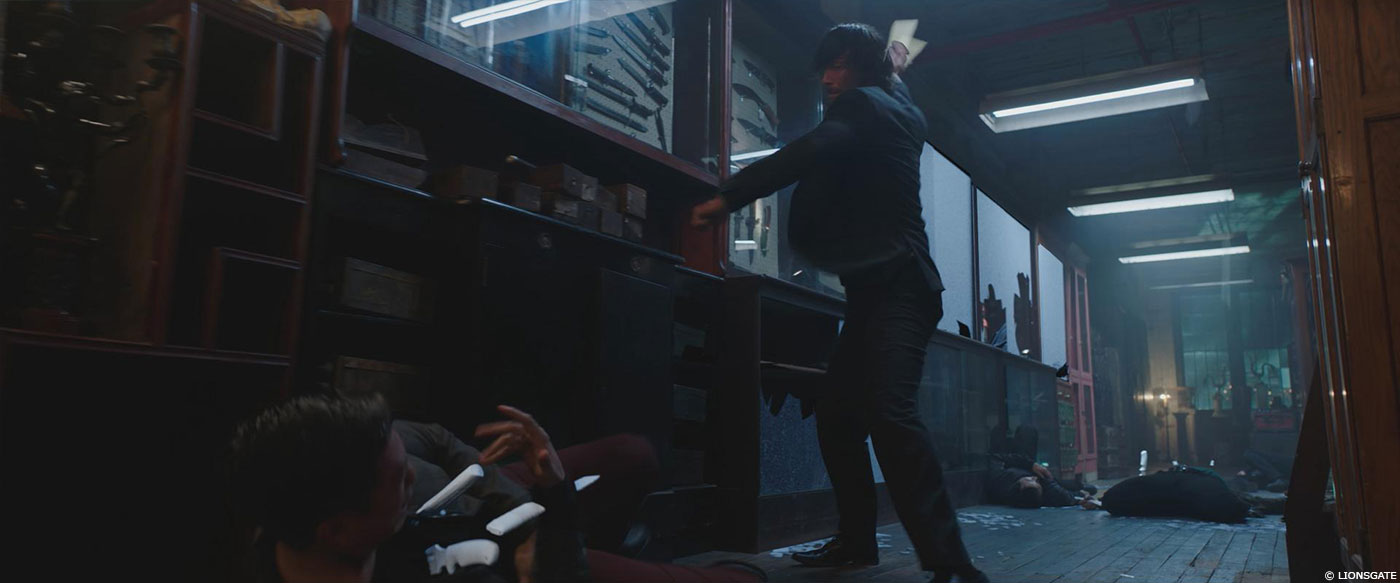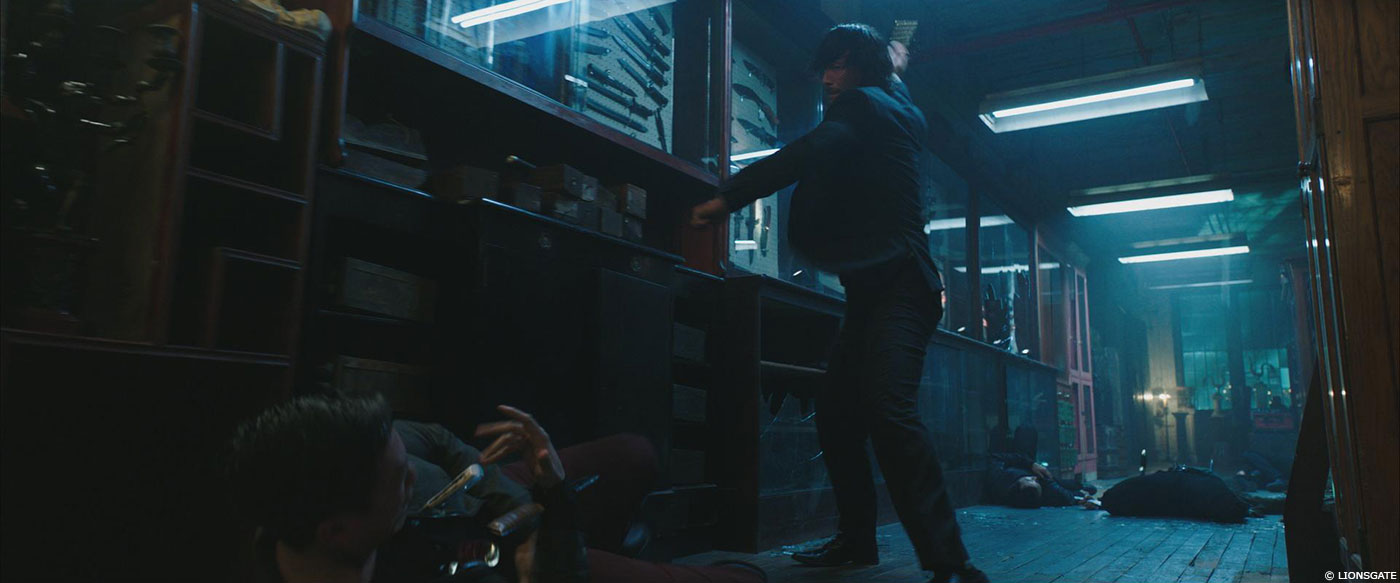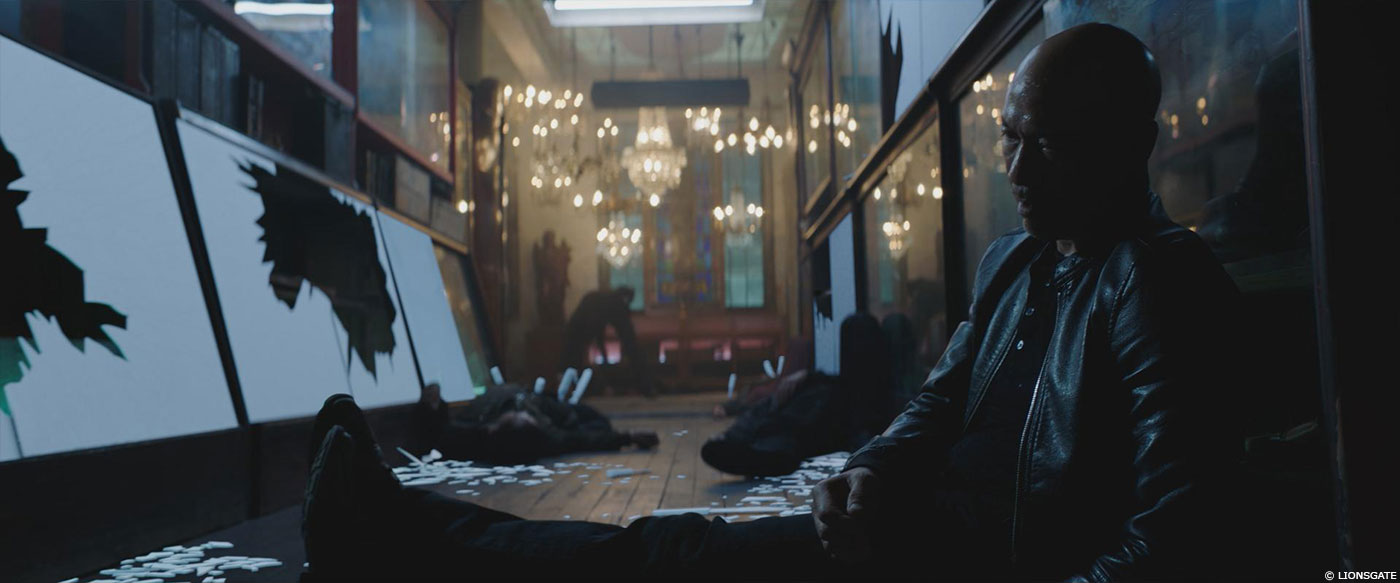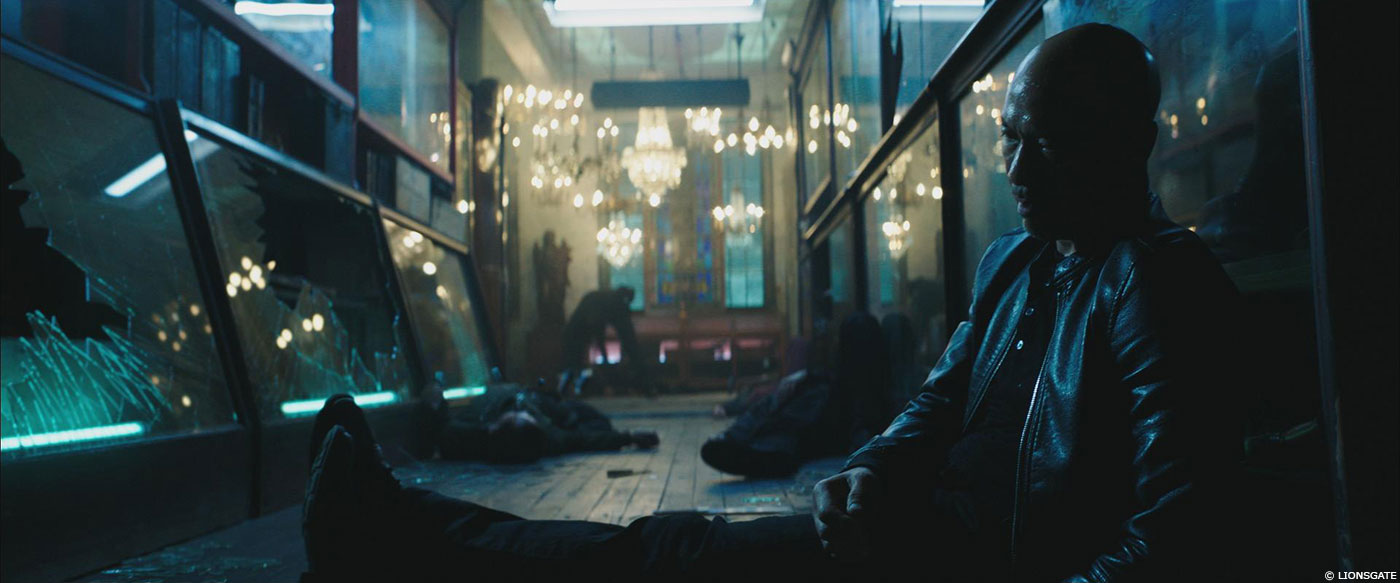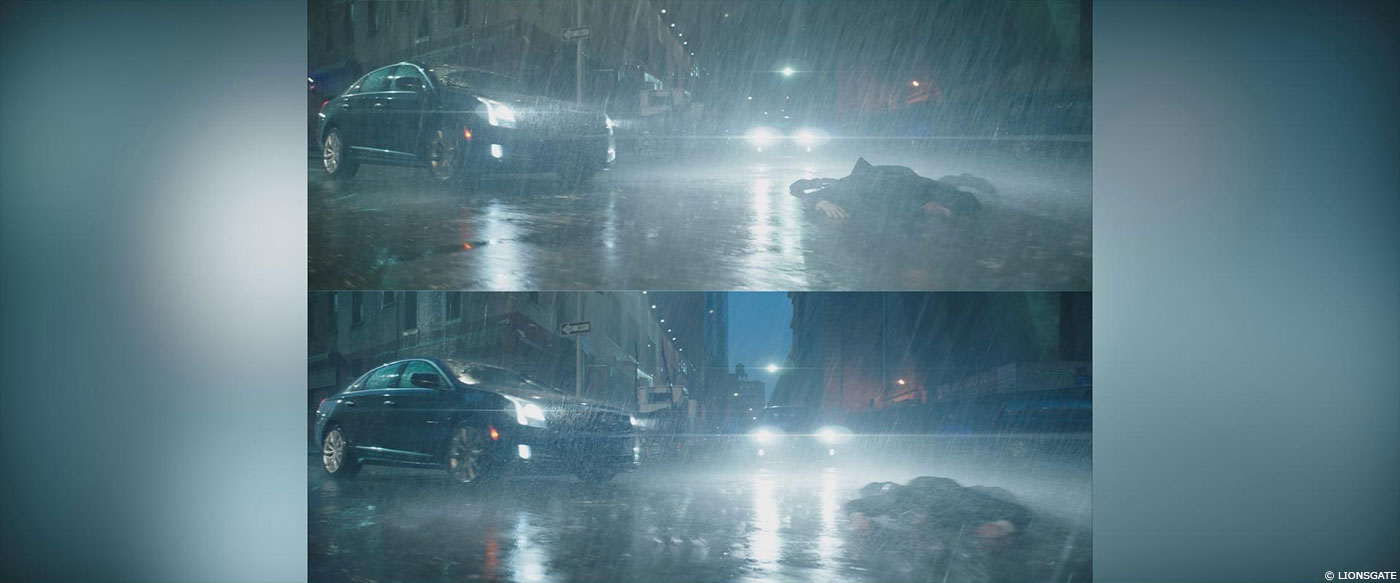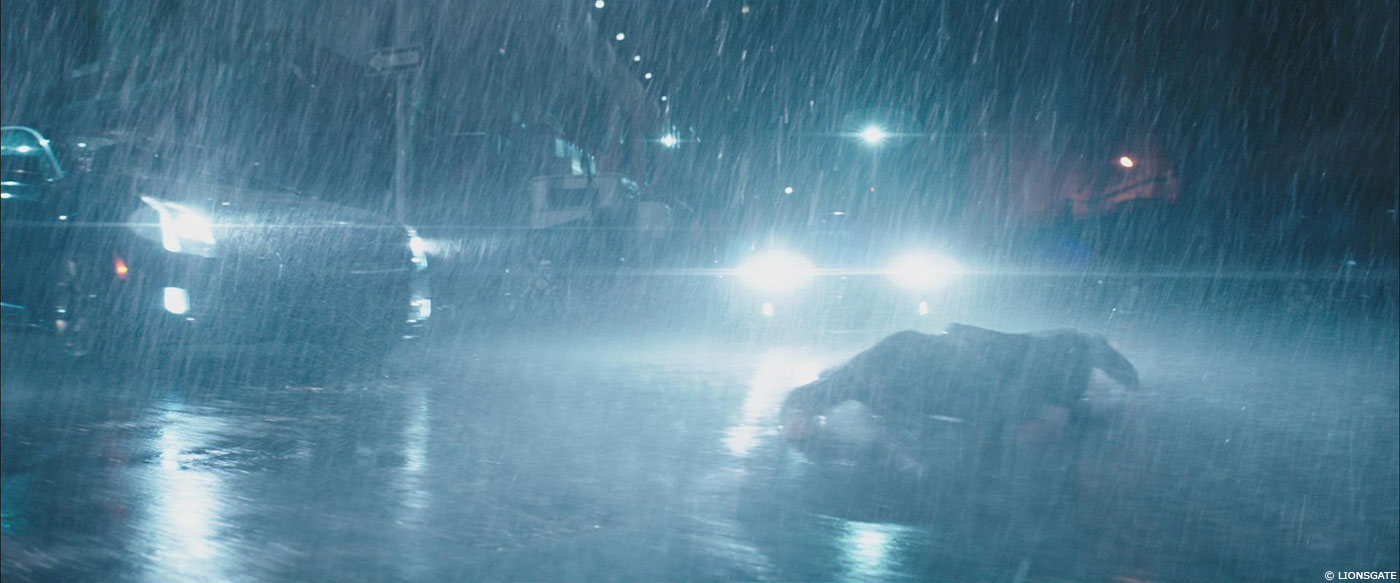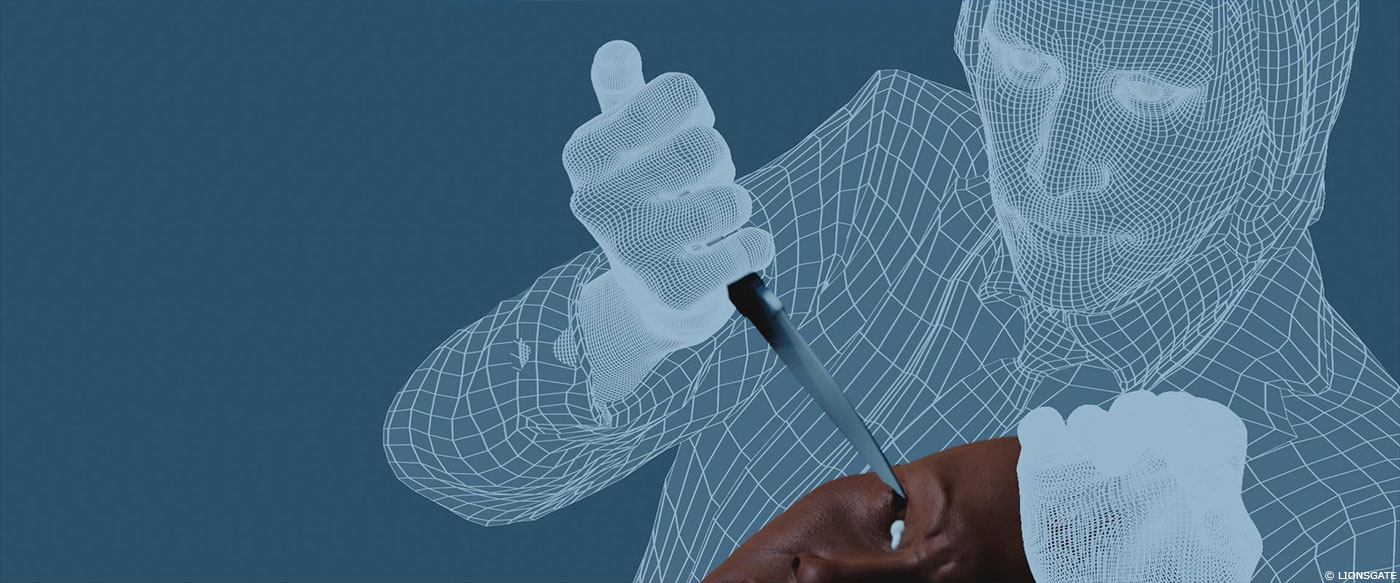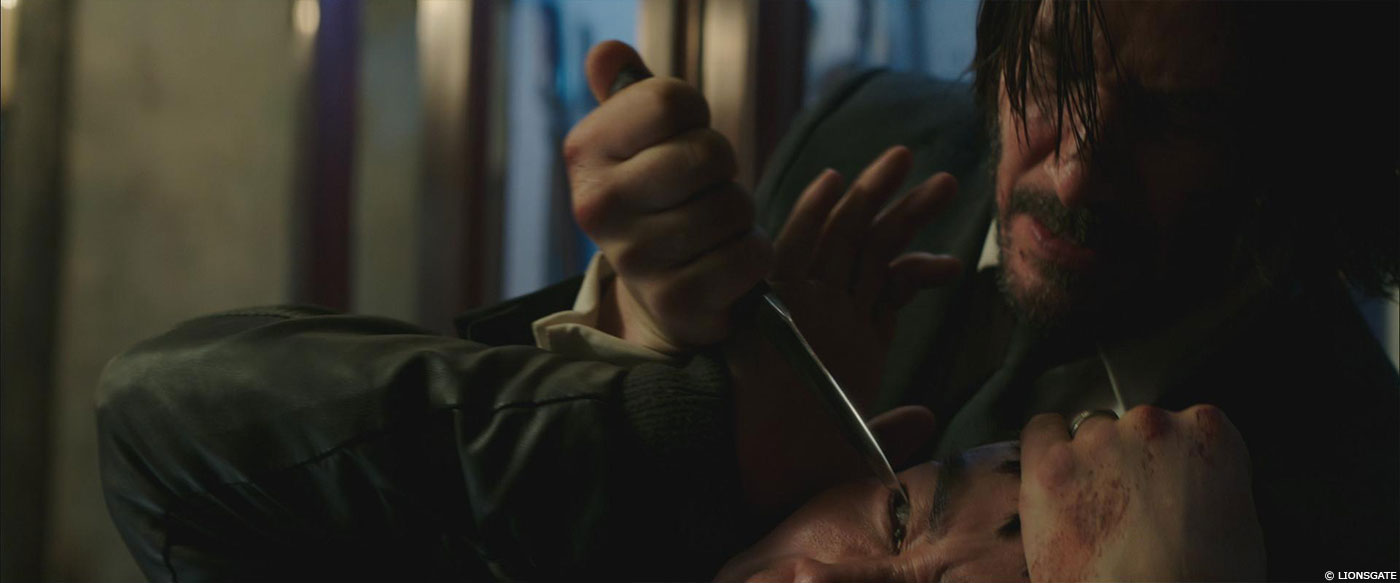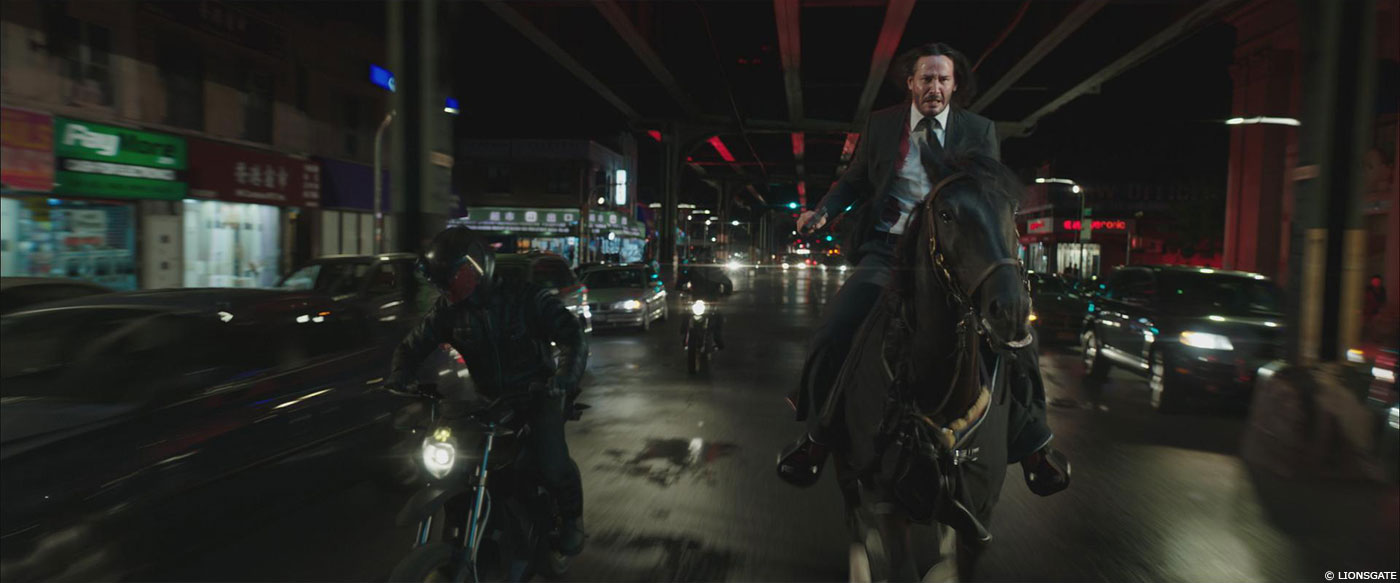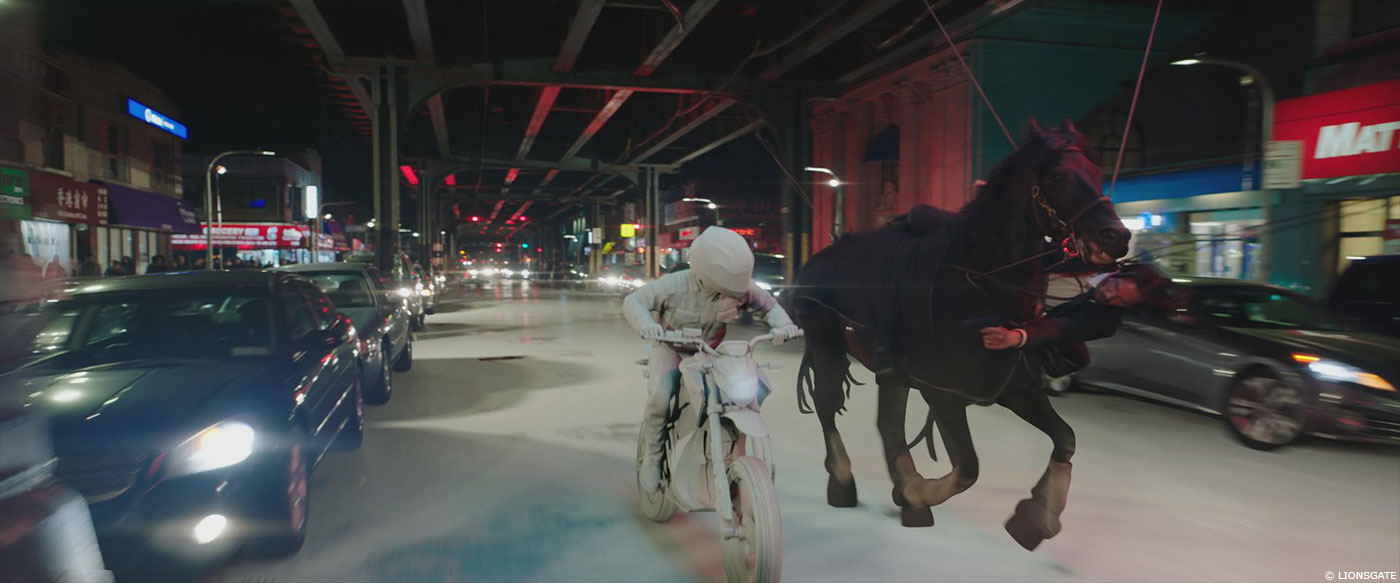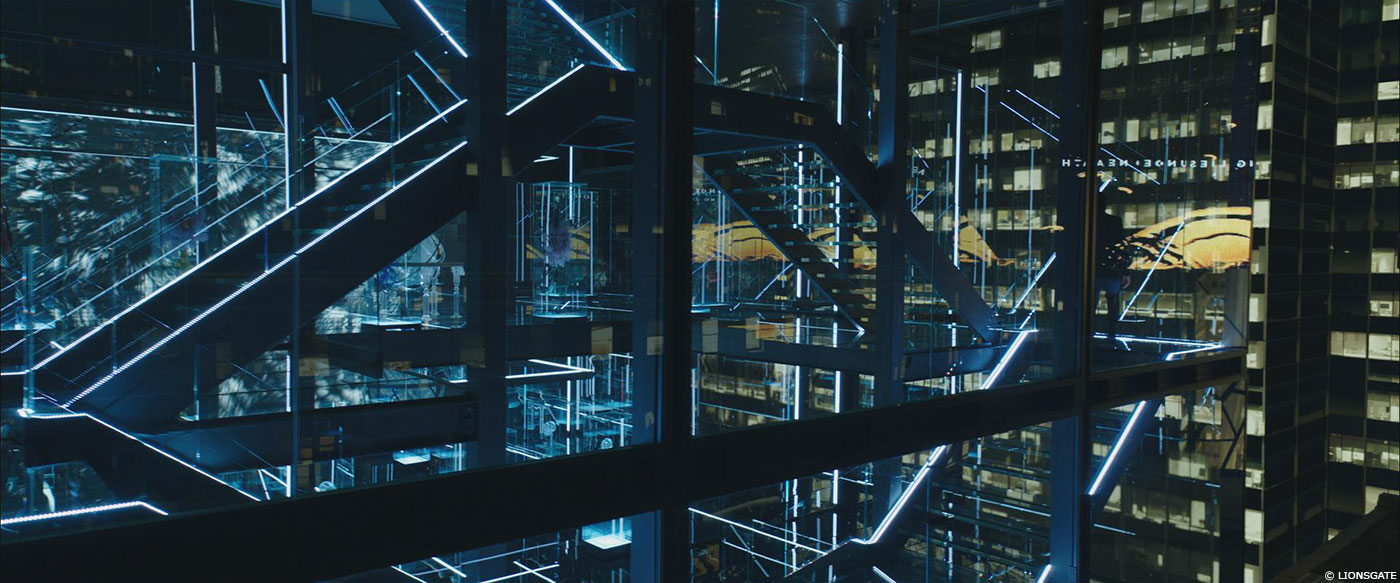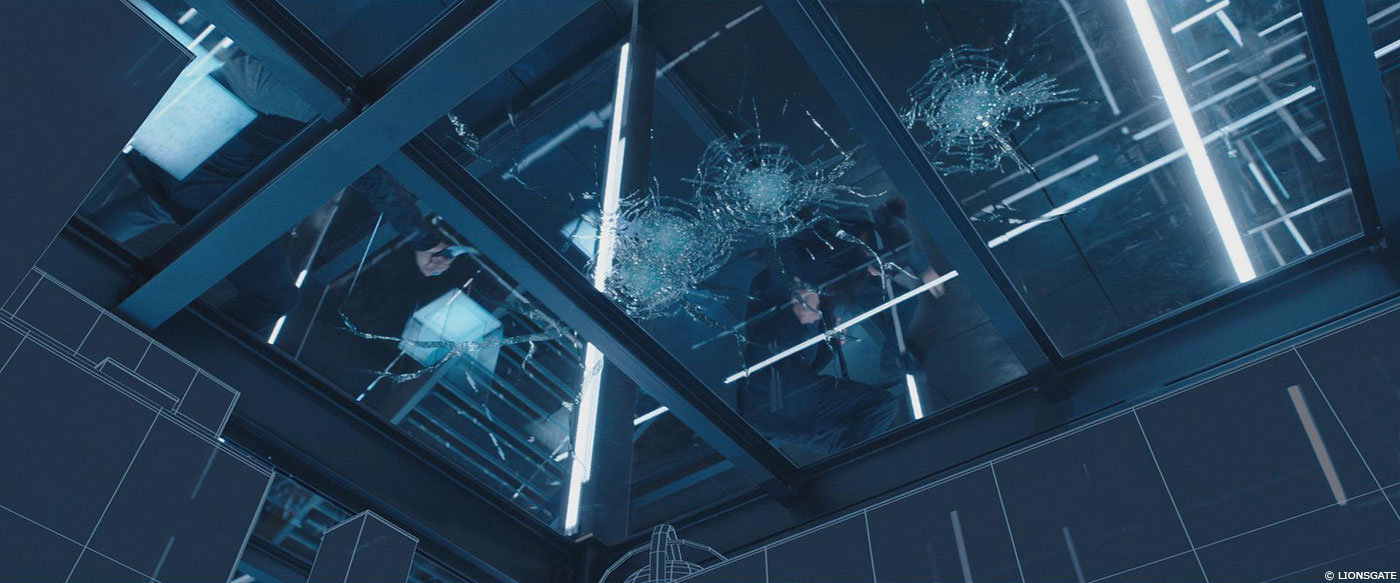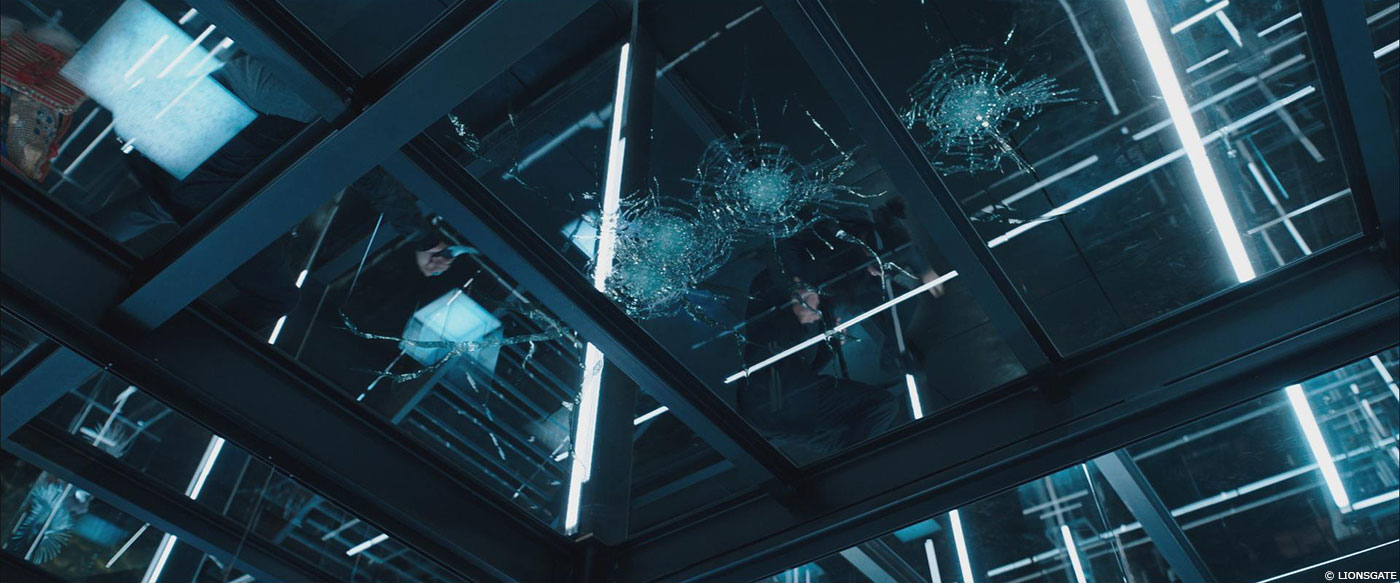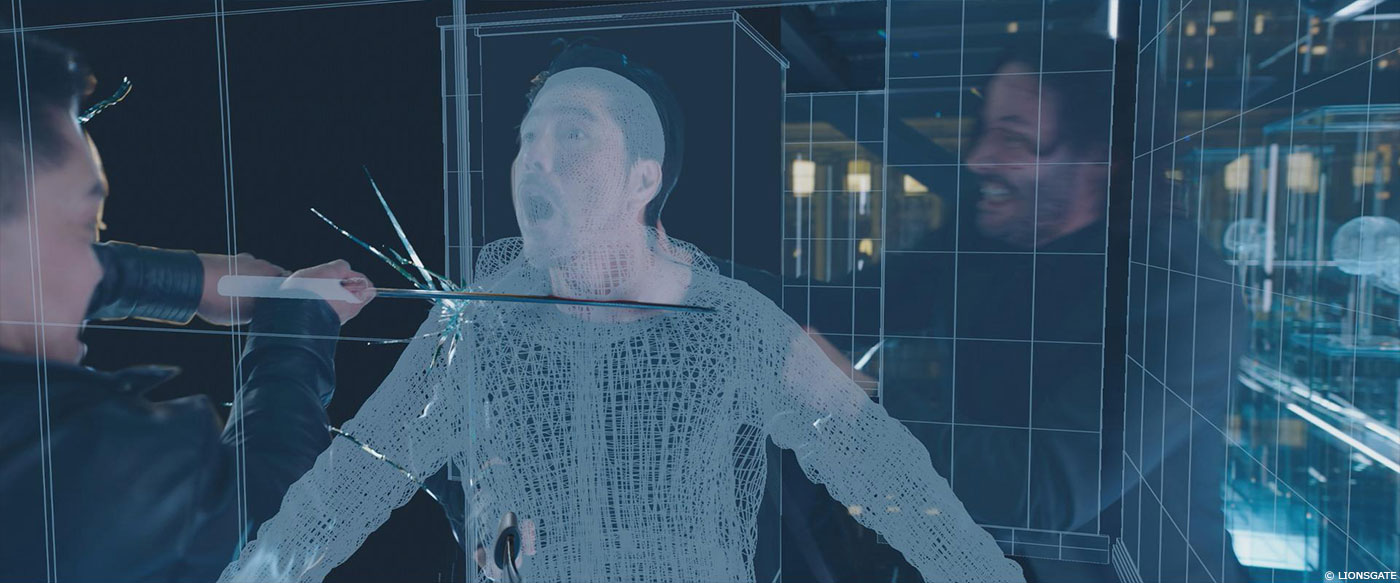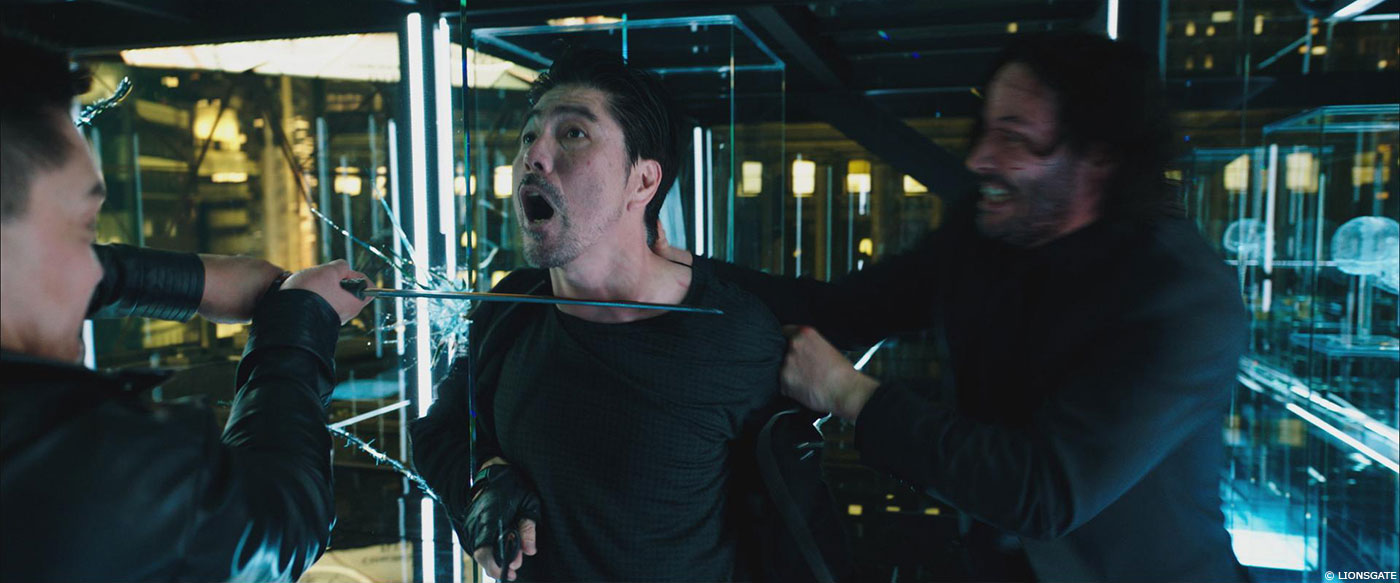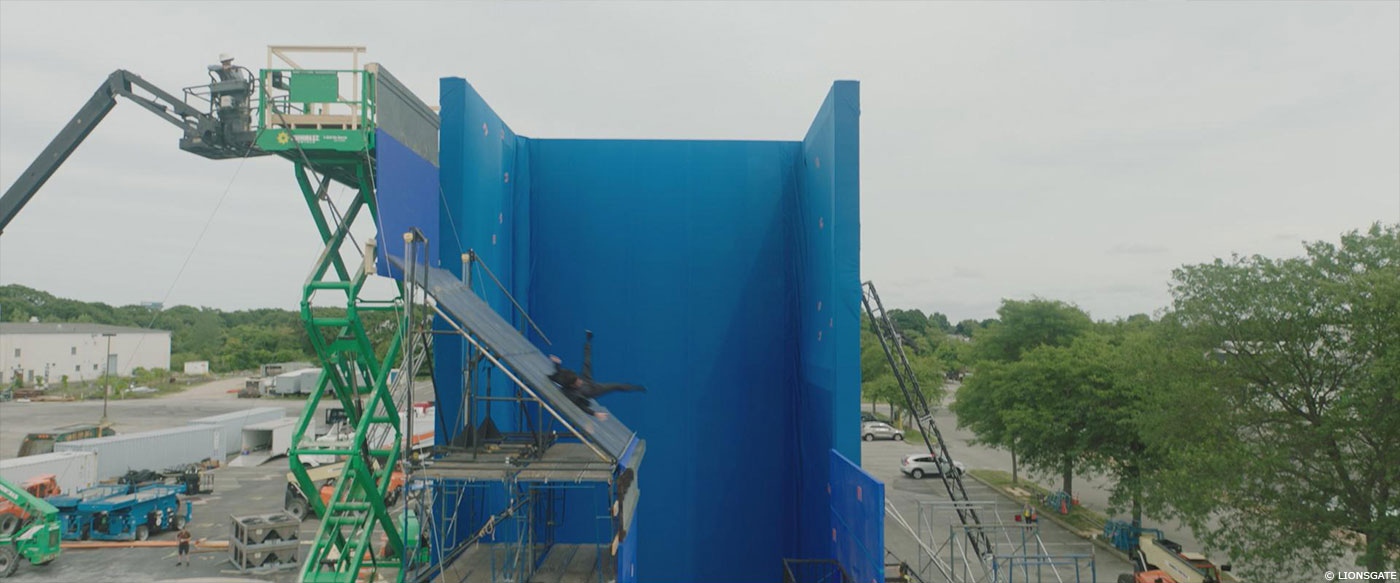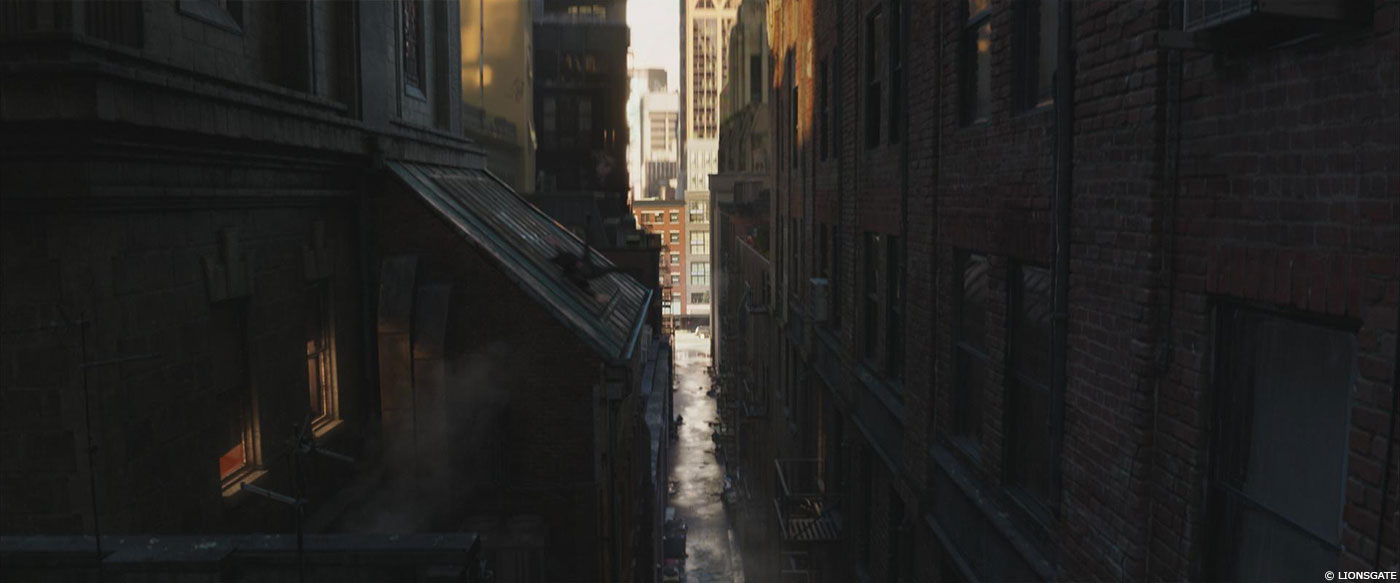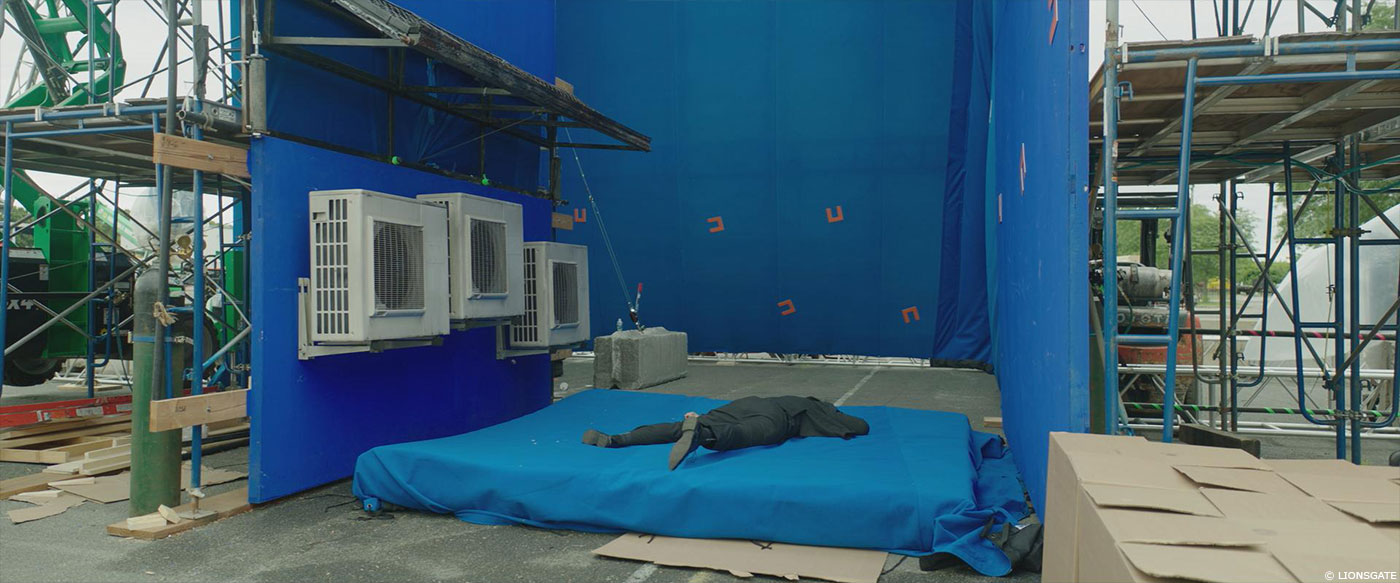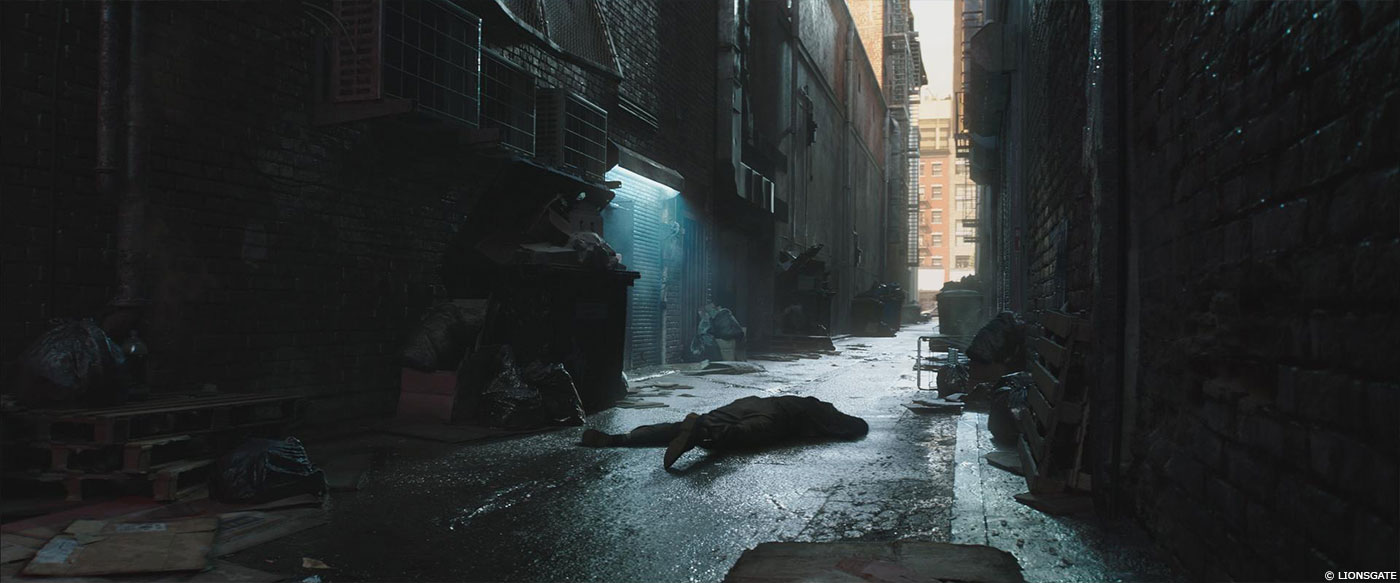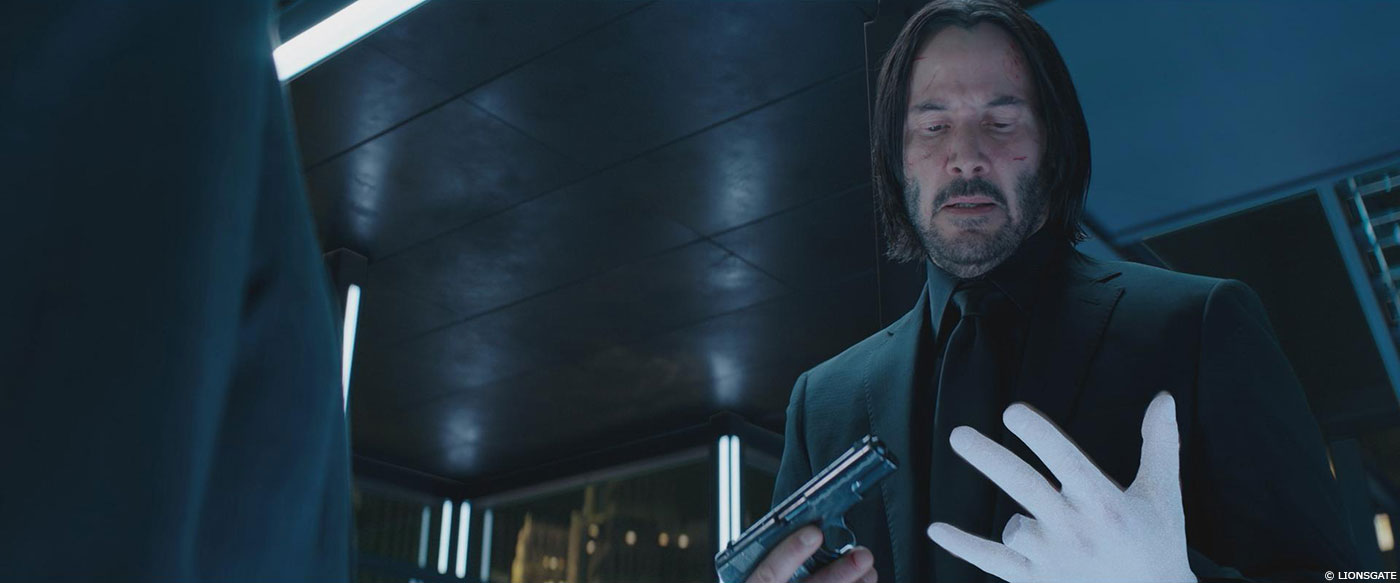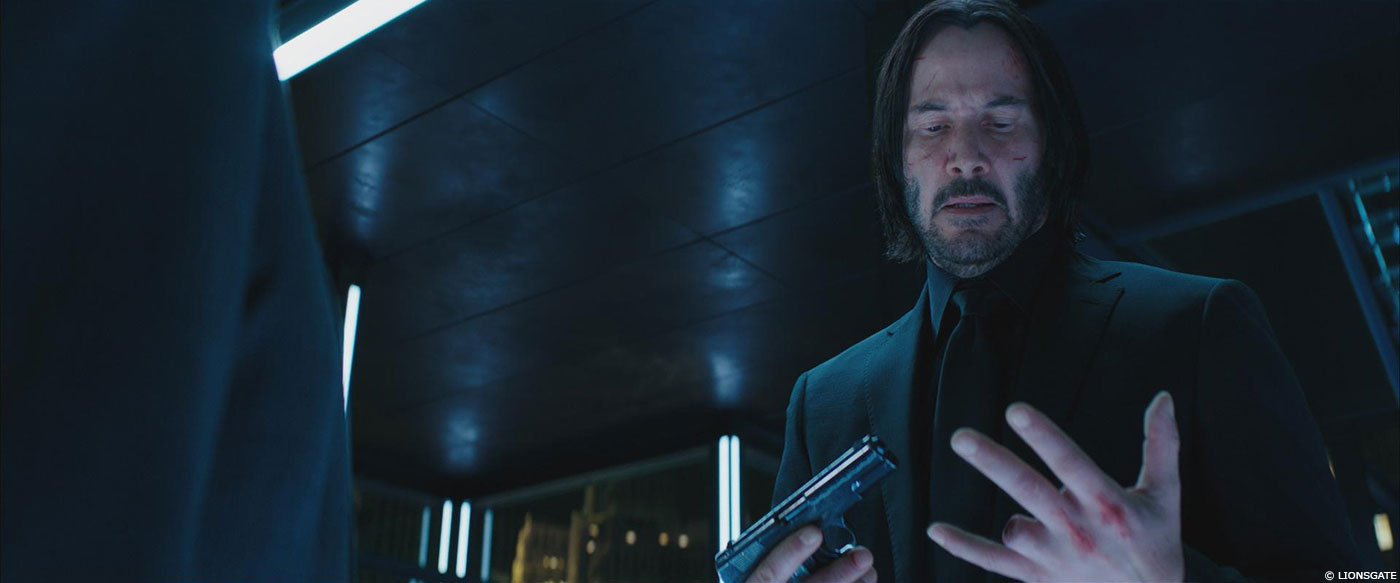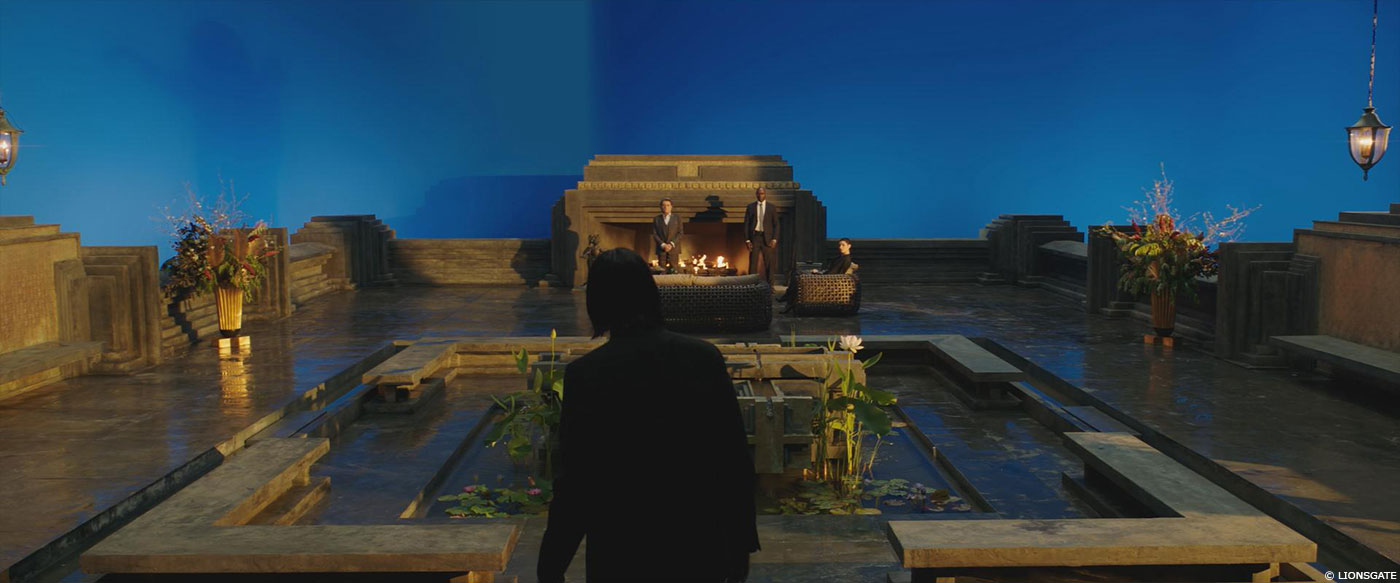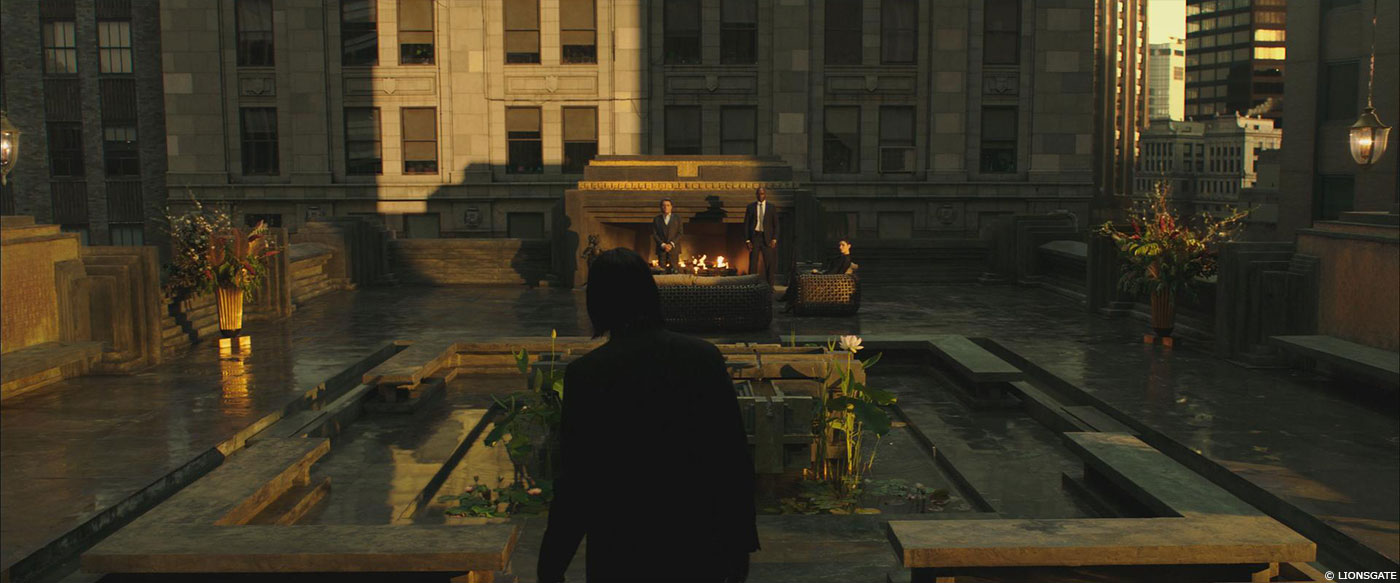Last year Glenn Melenhorst explained the work of Method Studios on TOMB RAIDER. He then worked on CHRISTOPHER ROBIN.
How did you and Method Studios get involved on this show?
We had a great experience working on JOHN WICK 2 and I guess Chad enjoyed working with us too, so we were invited to quote on this next installment. Also, as fans of the show, we would have tried to get on it even if we weren’t asked.
How was the collaboration with director Chad Stahelski and VFX Supervisor Robert Nederhorst?
We’d worked with Chad previously but not Rob. Rob is great because he has worked on the vendor side for many years and knows how much work is involved when he puts in a request. Both Chad and Rob are pragmatic filmmakers who understand VFX and that makes our lives so much easier and the job a lot more fun.
Can you explain in detail about the weapons creation during the fights with the knives?
There were a LOT of CG knives and a LOT of different cabinets in that sequence. We modeled each item off reference photography and tracked each knife throughout the sequence. We also tracked the glass damage in each shot and then accounted for the glass on the floor and all of the digital reflections of the actors and on set.
One of the bad guys ends with many knives on him. How did you handle the matchmove challenge?
There was a lot of careful matchmove in the film, not just for tracking the knives to the actors, but also to provide digital actors to reflect into the glass of both the warehouse fight and also the all glass apartment sequence. It all comes down to careful study of the set and checking the matchmove from multiple angles to make sure it works in 3D space.
Can you tell us more about the muzzle flashes and hits bullets?
We had quite a library of bullet hits and muzzle flashes from JOHN WICK 2 and we used that extensively for this show. Chad is very particular about how muzzle flashes appear, both the shape of them and how many frames they appear over.
How did you create the various car hits on John Wick?
We only had the one shot where the bad guy hits a parked car and flips over it. He was a digidouble for the whole shot and the cars were both fully CG.
Can you tell us more about the face replacement work?
We used a CG version of Keanu and the antagonists for many of the stunt shots. Occasionally we used a 2D face from another plate. Using a 3D face allowed us to integrate it into the set lighting, which was particularly important in the motorbike shots as the street lighting was very dynamic.
In a crazy fight, John Wick uses horses against bad guys. How did you create the various horses?
The horses were real, though we did have a huge amount of cleanup on those shots, as a lot of safety rigging was required to ensure the actors were not in any danger.
How did you approach the crazy chase sequence between a horse and the motorcycles?
Several of the cars parked in that sequence were fully CG and the road was completely replaced with CG too. As mentioned, we completed a huge amount of cleanup as there was a lot of safety rigging and barricades between each car to keep the horse from veering off the road. A large part of the job was re-creating the scene in 3D to reflect back into the wet CG road.
The final fight happens in an all-glass environment. What are the main challenges with an environment like this?
We generated most of the smashing glass for this sequence, as well as replaced portions of the distant translight of New York.
How did you create the set extension and the background for this sequence?
Most of the background skyline is practical, shot on set. We replaced several pieces in post and added lights turning on and off as well as shadows of people walking around. Shooting it practically meant we didn’t have to deal with restoring the many reflections of glass over the top of it. That said, where we did have to replace the translight, we needed to render the glass and reflections back on top which was a lot of work. Further to this, the ceiling was also CG for that sequence, and it needed to reflect the city and the interior lighting of the apartment. Hopefully all of that work is invisible.
How did you enhance this intense final fight?
We added lots of weapon extensions and digital glass scratches and shatters. We also tracked the shattered glass damage though this sequence, often rendering piles of damaged glass in the background. There were a lot of shots that needed this for continuity.
Which sequence or shot was the most complicated to create and why?
The alleyway that John Wick falls into toward the end of the show was fully CG. That alley was a big challenge with everything in it built from scratch. Only the stunt double was practical, and even then, we took him over as a digidouble in some parts of the shot.
What is your favorite shot or sequence?
The alleyway shots are my favourite because they were quite hard to nail.
What is your best memory on this show?
Honestly? Working with Rob and Kerry. They are great guys and have a good sense of humour, which helped us through.
How long have you worked on this show?
It was around a six-month timeline.
What’s the VFX shot count?
Around 400 shots.
What was the size of your team?
70 artists.
What is your next project?
I’m currently working on the sequel to JUMANJI: WELCOME TO THE JUNGLE and TERMINATOR: DARK FATE.
A big thanks for your time.
JOHN WICK: CHAPTER 3 – PARABELLUM – VFX BREAKDOWN – METHOD STUDIOS
NOTE:
John Wick Chapter 3 – Parabellum” is available now on 4K, Blu-ray, DVD and Digital.
WANT TO KNOW MORE?
Method Studios: Dedicated page about JOHN WICK: CHAPTER 3 – PARABELLUM on Method Studios website.
© Vincent Frei – The Art of VFX – 2019




